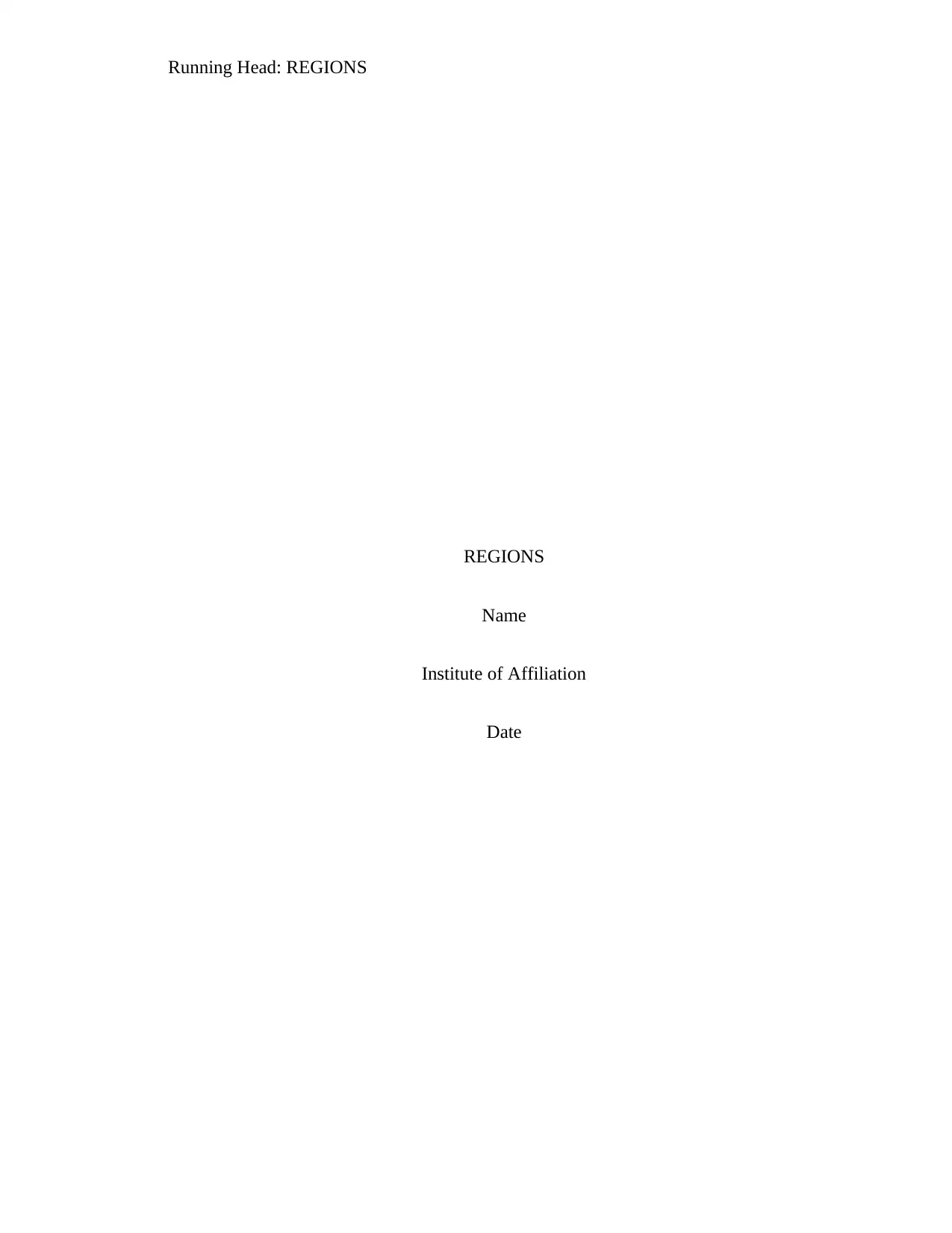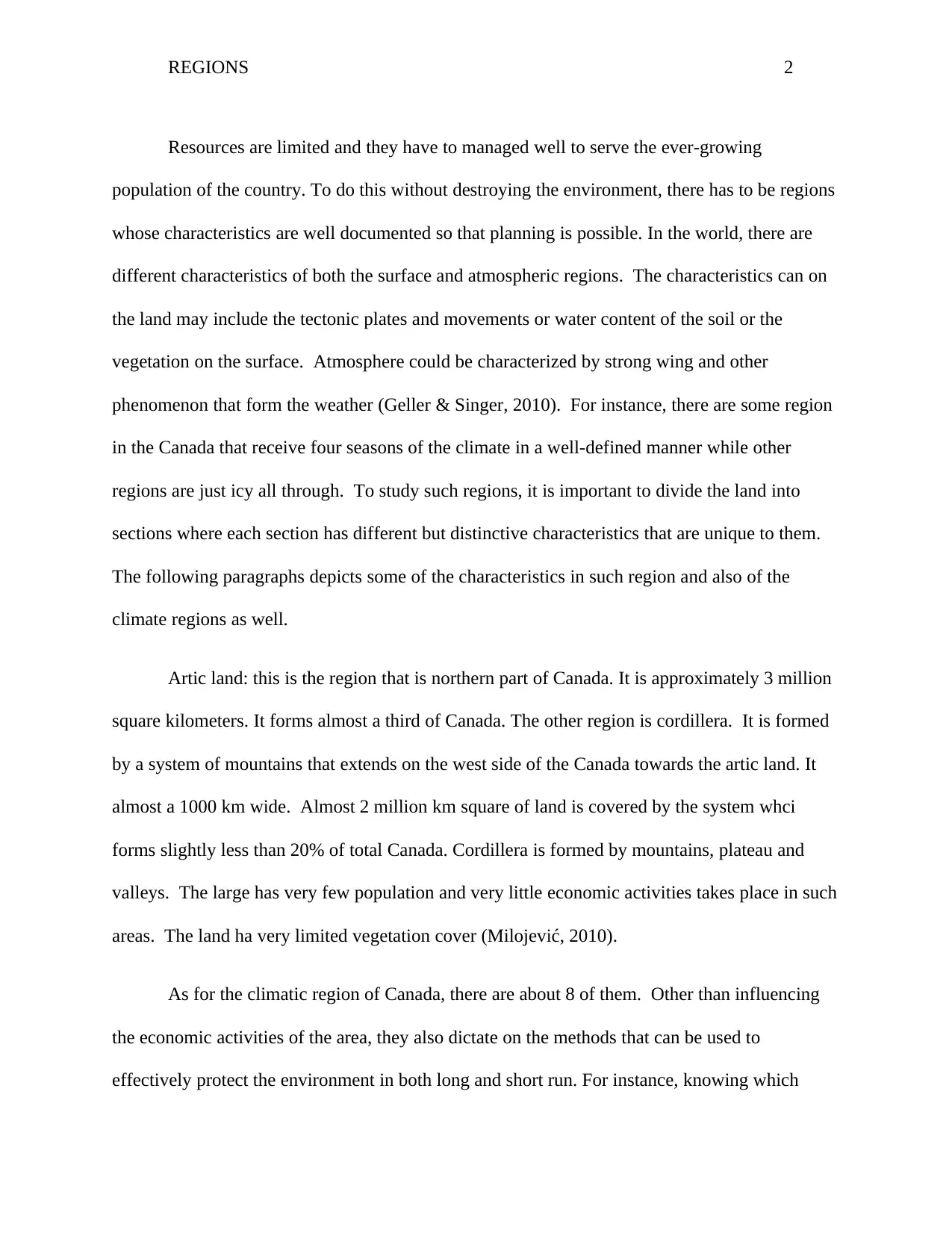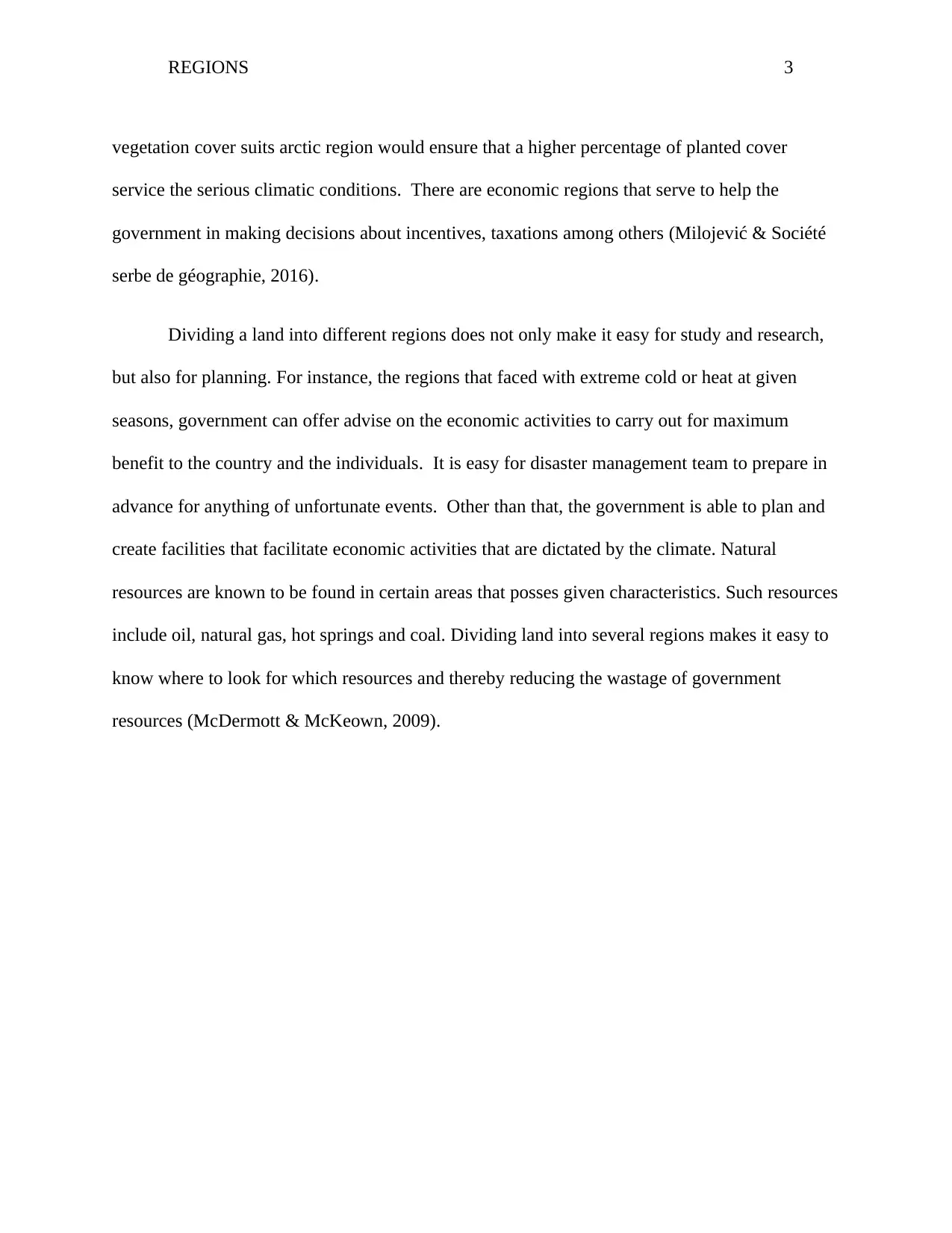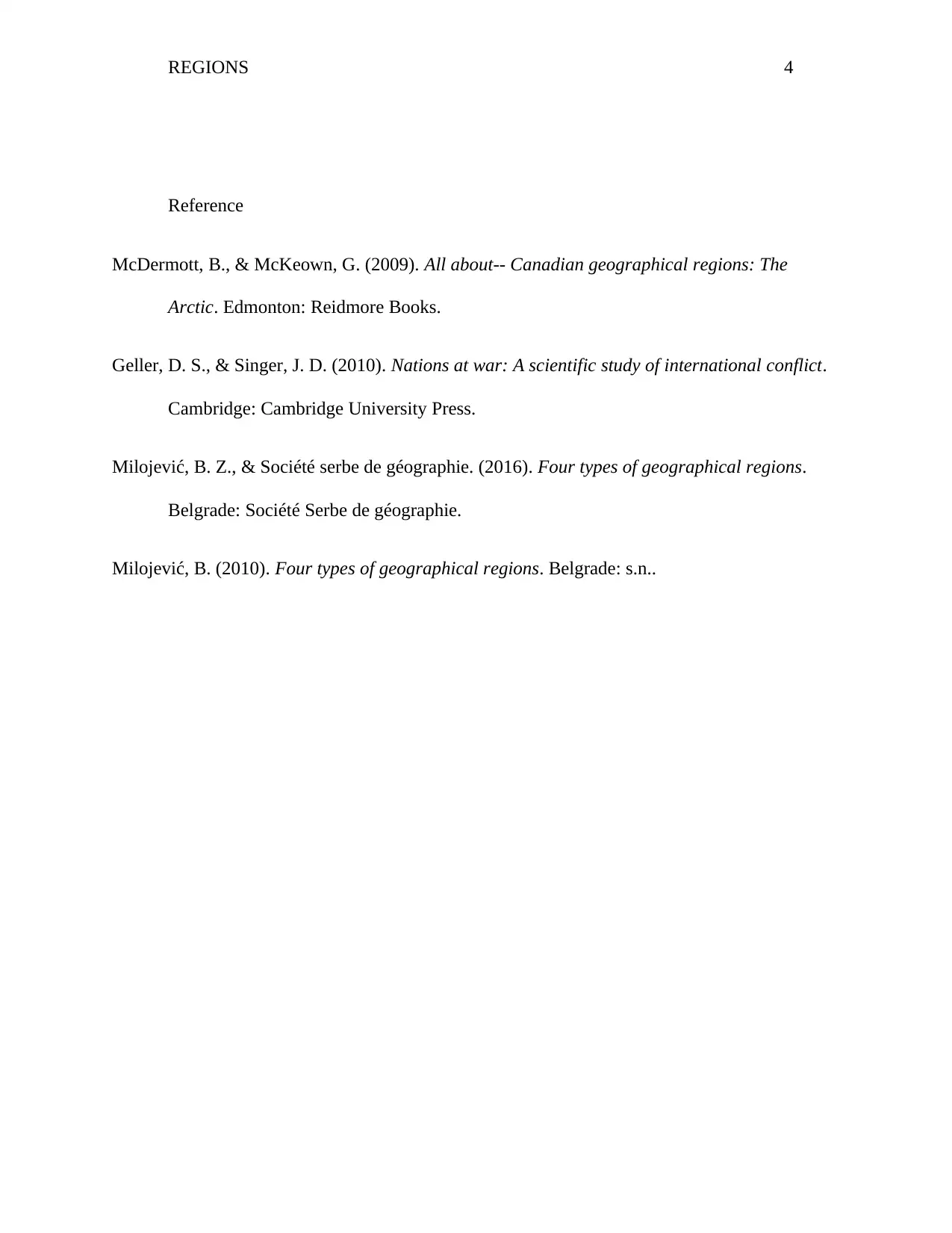Detailed Analysis of Geographic and Economic Regions in Canada
VerifiedAdded on 2022/11/15
|4
|692
|75
Report
AI Summary
This report provides an overview of the geographic and economic regions of Canada, emphasizing the importance of regional characteristics for effective planning and resource management. It discusses the Arctic land and Cordillera regions, highlighting their distinct features and limited economic activities. The report also examines the eight climatic regions of Canada and their impact on economic activities and environmental protection strategies. It stresses the significance of regional division for research, planning, disaster management, and the efficient allocation of resources, including natural resources such as oil, gas, and coal. The report references key sources to support its analysis, underscoring the need for understanding regional differences to address environmental and economic challenges effectively.
1 out of 4











![[object Object]](/_next/static/media/star-bottom.7253800d.svg)